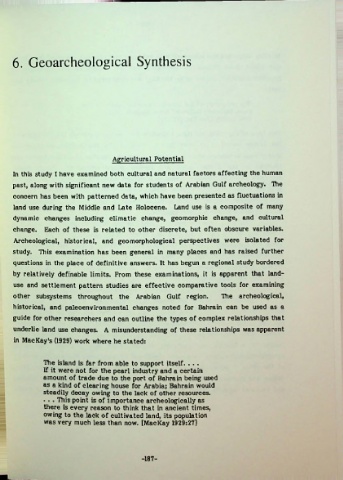Page 211 - Life & Land Use on the Bahrain Islands (Curtis E Larsen)
P. 211
6. Geoarcheological Synthesis
Agricultural Potential
In this study I have examined both cultural and natural factors affecting the human
past, along with significant new data for students of Arabian Gulf archeology. Tbe
concern has been with patterned data, which have been presented as fluctuations in
land use during the Middle and Late Holocene. Land use is a composite of many
dynamic changes including climatic change, geomorphic change, and cultural
change. Each of these is related to other discrete, but often obscure variables.
Archeological, historical, and geo morphological perspectives were isolated for
study. TTiis examination has been general in many places and has raised further
questions in the place of definitive answers. It has begun a regional study bordered
by relatively definable limits. From these examinations, it is apparent that land-
use and settlement pattern studies are effective comparative tools for examining
other subsystems throughout the Arabian Gulf region, TTie archeological,
historical, and paleoenvironmental changes noted for Bahrain can be used as a
guide for other researchers and can outline the types of complex relationships that
underlie land use changes, A misunderstanding of these relationships was apparent
in Mac Kay’s (1929) work where he stated:
TTie island is far from able to support itself. . . .
If it were not for the pearl industry and a certain
amount of trade due to the port of Bahrain being used
as a kind of clearing house for Arabia; Bahrain would
steadily decay owing to the lack of other resources.
. . . TTiis point is of importance archeologically as
there is every reason to think that in ancient times,
owing to the lack of cultivated land, its population
was very much less than now. [MacKay 1929:27]
-187-

